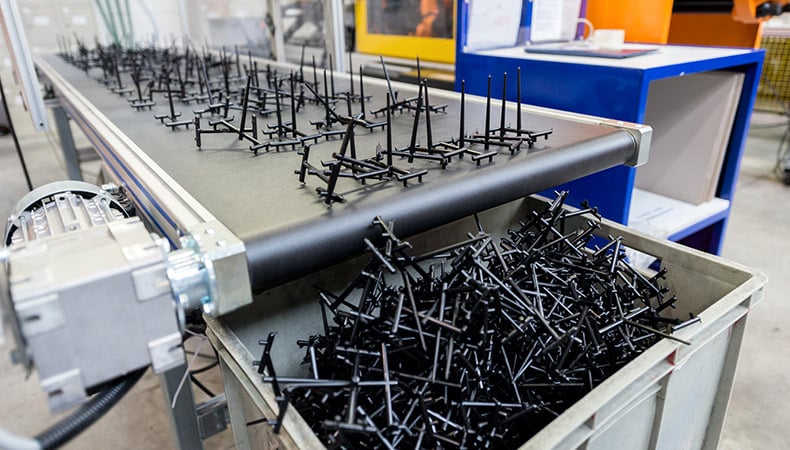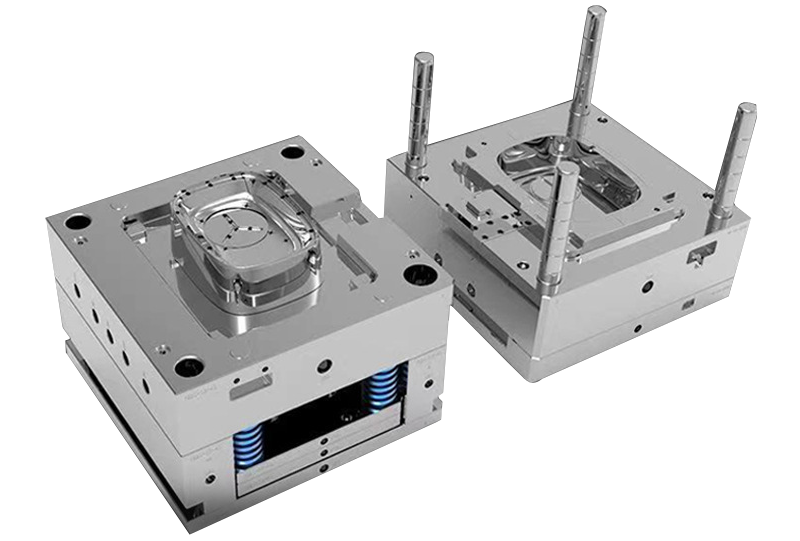Recognizing the Plastic Injection Molding Process for High-Quality Production
Recognizing the Plastic Injection Molding Process for High-Quality Production
Blog Article
Comprehending the Basics of Plastic Shot Molding Procedures
Plastic injection molding offers as a cornerstone of contemporary production, supplying a methodical strategy to producing intricate parts with accuracy. Discovering these necessary aspects might expose exactly how even minor changes can lead to substantial enhancements in manufacturing results, raising concerns about the potential for innovation in this established procedure.
What Is Plastic Shot Molding?
Plastic injection molding is an extensively used production process that changes thermoplastic and thermosetting materials right into accurate and intricate shapes. This method is preferred for its capability to generate high volumes of identical get rid of phenomenal accuracy, making it a crucial method in numerous industries, including automobile, durable goods, and clinical devices.
The procedure includes thawing the chosen plastic material and infusing it into a mold under high stress. The mold and mildew, created to the specifications of the preferred component, permits the liquified plastic to take shape as it solidifies and cools. When the product has set, the mold is opened up, and the ended up component is ejected.
Plastic shot molding provides a number of benefits, including minimized waste, uniformity in production, and the ability to incorporate intricate designs that might be testing with various other producing techniques. Furthermore, it supports a wide variety of materials, each providing one-of-a-kind residential or commercial properties that can be tailored for certain applications. As sectors remain to introduce, plastic injection molding continues to be at the leading edge, enabling the growth of advanced items that meet evolving customer needs.
The Injection Molding Refine
The injection molding procedure is an innovative strategy that entails a number of vital stages to generate high-grade plastic parts. Originally, plastic pellets are fed right into a warmed barrel where they are melted right into a thick liquid. This molten plastic is after that infused under high pressure into a precision-engineered mold, which shapes the product into the preferred kind.
As soon as the mold is filled up, the plastic is permitted to strengthen and cool, taking the form of the mold cavity. Air conditioning time is vital, as it influences the cycle time and the final properties of the molded component. After adequate cooling, the mold and mildew opens up, and the finished part is ejected using ejector pins.

Products Used in Injection Molding
Various materials can be utilized in the injection molding process, each offering distinct residential properties that provide to specific applications. The most commonly made use of materials include thermoplastics, thermosetting plastics, and elastomers.

Thermosetting plastics, like epoxy and phenolic materials, undergo a chemical modification during the healing process, causing a rigid, inflexible structure. These products are perfect for applications calling for high heat resistance and architectural integrity, commonly used in vehicle components and electrical insulators.
Elastomers, consisting of silicone and rubber-based materials, offer adaptability and strength. Their distinct homes make them ideal for applications that require elasticity, such as gaskets and seals.
Furthermore, specialized products like bio-based plastics and compounds are gaining grip for their ecological advantages and boosted efficiency qualities, expanding the extent of shot molding applications in different sectors. Comprehending the properties of these materials is crucial for choosing the proper kind for certain projects.
Advantages of Injection Molding
Shot molding attracts attention as a highly efficient manufacturing process that supplies countless benefits for generating complicated get rid of accuracy. Among the most significant benefits is the capacity to create elaborate layouts that would certainly be tough or impossible to attain with other approaches (Plastic Injection Molding). The procedure enables thorough features and tight resistances, making sure premium elements
Furthermore, injection molding is understood for its rapid manufacturing abilities, making it an optimal choice for high-volume manufacturing. Once the mold and mildew is developed, parts can be created quickly, reducing lead times and boosting general efficiency. This performance not just reduces production costs however likewise offers an one-upmanship in the market.
The adaptability of materials utilized in injection molding better enhances its charm. A large variety of thermoplastics and thermosetting polymers can be utilized, enabling makers to pick materials that best satisfy their details my latest blog post needs, consisting of warm, versatility, and toughness resistance.
Furthermore, the procedure lessens waste, as excess product can usually be reused and recycled. This sustainability element adds to a lowered environmental effect, making injection molding an accountable production selection. Overall, the benefits of shot molding make it a preferred method for many sectors.
Variables Impacting Item Quality
While various factors can affect item high quality in injection molding, understanding these elements is vital for achieving optimal results. Key facets include material choice, processing specifications, and mold layout.
Material selection plays an important duty, as different polymers display special buildings that influence flowability, toughness, and thermal security. Inadequate material option can bring about flaws such as bending or insufficient dental filling.
Handling criteria, consisting of stress, cycle, and temperature time, need to be diligently controlled. Variations in these setups can result in incongruities partially measurements and surface coating. For example, excessively high temperature levels may create destruction of the polymer, while poor pressure can cause brief shots.
Mold and mildew style is similarly essential, as it figures out the circulation of the molten plastic image source and the cooling process. Poorly made molds might cause irregular cooling prices, resulting in dimensional mistakes and residual anxieties.

Verdict
To conclude, plastic shot molding functions as an important production procedure that makes it possible for the reliable production of high-quality components. Proficiency of the shot molding procedure, including the understanding of materials and the influence of numerous elements on product quality, is essential for achieving optimum outcomes. The advantages of this technique, such as cost-effectiveness and layout versatility, more highlight its importance throughout several sectors, strengthening its status as a preferred selection for high-volume production.
Plastic shot molding serves as a foundation of modern-day production, offering a systematic approach to producing complicated elements with accuracy.Plastic shot molding offers several benefits, consisting of lowered waste, consistency in manufacturing, and the ability to integrate detailed layouts that might be challenging with other making techniques (Plastic Injection Molding). As industries continue to innovate, plastic shot molding continues to be at the forefront, allowing the advancement of innovative products that fulfill advancing customer needs
The shot molding process is an innovative method that entails numerous vital stages to create top quality plastic components.In final thought, plastic injection molding serves as an essential production procedure that enables the effective manufacturing of top notch components.
Report this page